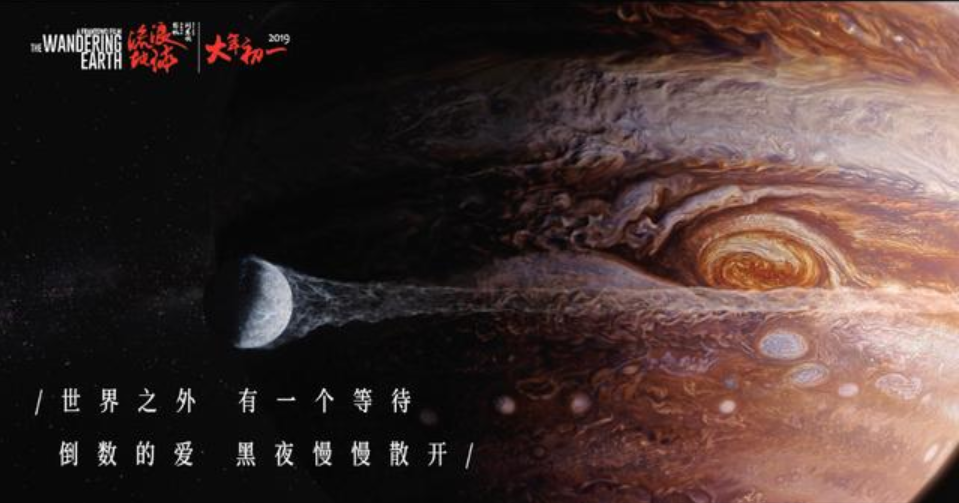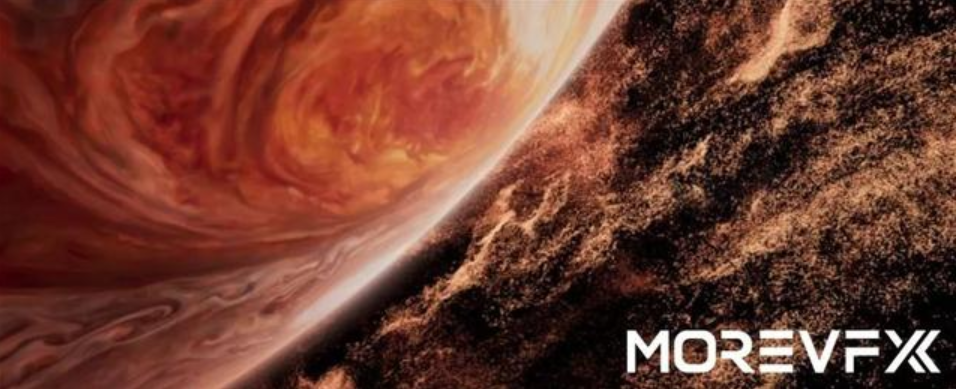Bolster the growth and digital transformation of your business amid the outbreak through the Anti COVID-19 SME Enablement Program. Get a $300 coupon package for all new SME customers or a $500 coupon for paying customers.
By Lu Xiaoming, nicknamed Xiaoming at Alibaba.
Do you like the amazing special effects you see in movies? These are the work of talented visual effects (VFX) artists. You might be imagining that they are eccentric like Van Gogh or free spirits like Hemingway. Nope. VFX artists are just like you and me: they work 9-to-5 jobs and worry about their rent.
Due to the current pandemic, many of us have to work from home, and some offline industries such as manufacturing, restaurants, retail, and cinemas have even had to shut down their operations. Film and television post-production is one of the industries facing a huge challenge when it comes to "returning to work".
What do you picture when you think about a VFX artist at work? Men and women sitting in front of huge monitors, working with cool software to produce impressive, lifelike special effects. So they should have no problem working from home, right?
Wrong. This article will discuss how Alibaba Cloud worked with MORE VFX, the team behind the visual effects in the 2019 science fiction film, The Wandering Earth, and the top visual effects company in China, to develop a solution that blazed a trail for the industry.

The obstacles MORE VFX encountered are representative of those facing the visual effects industry as a whole. There are three major technological obstacles for artists to work from home effectively:
The first is equipment. Modeling and special effects rendering have extremely high requirements for computer components like CPUs and GPUs. VFX companies buy workstations designed for computing and real-time image processing, or to put more simply, highly specialized computers, for their artists. Ordinary PCs fall far short of being able to handle VFX workloads.
This is why many artists have to work overtime at the office with the company cat instead of working from the comfort of their homes. You might ask, why not just bring the workstations home? Artists may find themselves waiting all day for one clip to finish downloading.
And that is the second obstacle, the network connection. The film and television post-production industry is heavily reliant on data, and involves work on very large files. The total size of a single project's data file can easily exceed 100 terabytes. Downloading that amount of data using a home network connection is extremely unrealistic.
The third obstacle is data security. The clip materials are one of the core assets of VFX companies. These are stored on the company's intranet. When artists work in the office, they essentially work in a well-fenced enterprise intranet. Even the USB ports on their computers are disabled. Security at a VFX company is more stringent than you could imagine. The production rooms especially really are "authorized personnel only."
If an artist wants to work from home, the artist must connect to the enterprise intranet from the public network, reload their unfinished work, and search the intranet to find the materials for the project. If the materials are leaked, the consequences are severe. If a leak involves an upcoming movie, the film investments could be lost.
With the current pandemic in full swing, sheltering in place is a necessary means to ensure the health of employees. However, the obstacles we just discussed were preventing VFX artists from working from home.
VFX production companies require artists to work collaboratively. If the projects are delayed because people are not able to work, that means that there will be less income to be had, and operating costs such as wages and rents would be hard to come by. All of this can easily cause a company to go bankrupt.
MORE VFX was able to get all their employees ready to work from home in just two days, despite all these obstacles. How did they do it? According to their CEO Xu Jian, the employees resumed work on February 3. Up to the present day, they have been able to achieve 70% to 80% of their normal production rate, with some departments reaching 90%. For their systems, data security is also in full swing.

MORE VFX immediately set up a pandemic response team during the Spring Festival to protect the health of their personnel and decide on protective measures. At the same time, "The IT department began to evaluate the remote work solution we developed with Alibaba Cloud. When this solution passed our tests and was accepted, our CG Director started testing the solution straight away. Gradually, each department arranged testing to determine whether the remote working solution met their normal production standard." Xu Jian said.
The remote production solution mentioned here is based on Alibaba Cloud Desktop and Elastic GPU Service (EGS). Cloud Desktop is a cloud service based on desktop virtualization. Simply put, desktop virtualization uses cloud servers to mimic local desktops and users control cloud servers through their monitors.
A private line connects MORE VFX and Alibaba Cloud's data centers. The artists access Alibaba Cloud Cloud Desktop instances from home through the public network, and then remotely connect to their office workstations by using RDP, VNC, or DCV. In this way, the artists are actually still using their daily workstations in their office, which are on the corporate intranet. The specifications of the PCs used at home does not really matter. Typical broadband connections are just fine since there is no need to download huge files.
As for data security, Cloud Desktop instances act as jump servers and offer data management and control features that typical remote desktop software (such as VNC and RDP) does not, such as traceable watermarks, customizable device access policies, and disabling of file upload and download. This reduces the risk of material leaks, and helps MORE VFX to implement data isolation.
Implementation was made on the first day, testing on the second, and use on the third. It only took two days for MORE VFX to restart production with everybody working from home. They got back to work while protecting employee health.
After a round of comprehensive tests, MORE VFX CEO Xu Jian immediately hosted a tech talk with more than 20 companies in the industry to share the technology in the hopes that this could help their industry peers to handle the challenges at hand.
The reason MORE VFX was able to get back to work so quickly during the pandemic is the elasticity of the cloud. MORE VFX's prior investment in cloud computing and technical edge had built a solid foundation for their agile adaptation to the change.
Behind all the flash and glamour, the film and television special effects industry has quite a few practices that seem to come from the dark ages.
You might not think this was still being done in the age of the Internet, but film renderings are stored on hard drives, which are then delivered by hand to the render farm. According to industry experts, a movie usually requires at least 100 of these hard drives.
Cloud computing, which is seen as the future, is yet to be popularly adopted by the film and television industry. Fortunately, several top-tier companies have already taken steps to migrate to the cloud.
MORE VFX is one of those companies. Alibaba Cloud has been working with MORE VFX on various aspects since last year, including on rendering, which requires the most computing power of all the production steps.
MORE VFX handles a huge volume of post-production, and their demand for computing power changes with projects. Their on-premise render farm consists of several hundreds of servers. It is under utilized when there's not much work. During peak times, the queue is so long that they have to use external render farms to cope with the load. The farm servers are getting old and their performance is less than ideal. Using hard drives to deliver company property is unsafe. The whole process lacks elasticity.
These problems continued to plague MORE VFX until they decided to lease a private line to Alibaba Cloud and use E-HPC to render materials in the cloud.
After learning about MORE VFX's workflow, Alibaba Cloud came up with a hybrid cloud rendering solution that uses the private line to move rendering tasks to the cloud. This solution also provides a customized asynchronous file caching mechanism for MORE VFX to reduce the stress on the bandwidth of the private line when there is an ultra-large-scale rendering task.
Additionally, Alibaba Cloud E-HPC's ability to scale up and out is essential in helping to ease the throughput and I/O stress rendering nodes put on the caching layer. This provides strong resource elasticity.
With the integrated general-purpose deadline, billing, and report features, Alibaba Cloud E-HPC is able to scale the rendering cluster automatically according to the task queue. This made O&M simple and greatly reduced the workload of the MORE VFX IT department.
The migration to cloud during the second half of 2019 helped MORE VFX improve its rendering performance and elasticity and allowed it to experience the power of cloud services. Those of us who can do so are working from home during these trying times. This has created a huge demand for remote work technology. MORE VFX is now not only a trail blazer for cloud production, but also the reason many VFX companies are paying close attention to cloud computing.

Xu Jian once said in an interview with the entertainment media outlet San Sheng: "The Hollywood visual effects studios are still decades ahead of us." Speaking frankly, he said that foreign companies design software and research algorithms, while domestic companies buy the products, use them, and maybe extend their functionalities a little bit.
MORE VFX has produced or participated in multiple award-winning films such as The Wandering Earth, The Island, and Wu Kong.
As a leading visual effects company in China, MORE VFX has always been interested in leading the industry and helping it transform. Xu Jian hopes that the domestic industry will actively seek out new technologies and innovate infrastructure and core algorithms. He thinks cloud computing is the perfect platform to encourage and accelerate the change.
Xu Jian also believes that the VFX industry in China can still expect 10 years of rapid growth ahead both in terms of market demand and overall development.
Cloud computing helped to reduce the cost of starting a new company and increased the efficiency of innovation. We believe that it is going to do the same for Industry Internet by helping more industries to upgrade.
The domestic VFX industry has huge potential, and Alibaba Cloud can help turn this potential into a reality. As more companies like MORE VFX migrate to the cloud, the depth and breadth of the adoption of cloud computing for the film and television industry will rapidly expand, helping the Chinese visual effects industry build its own technical strengths.
While continuing to wage war against the worldwide outbreak, Alibaba Cloud will play its part and will do all it can to help others in their battles with the coronavirus. Learn how we can support your business continuity at https://www.alibabacloud.com/campaign/fight-coronavirus-covid-19
What Technologies Do We Think Will Rise to the Occasion During and After This Pandemic

2,599 posts | 764 followers
FollowIain Ferguson - March 11, 2022
Alibaba Cloud ECS - March 5, 2021
Alibaba Cloud Community - February 16, 2022
AsiaStar Focus - June 30, 2022
Alibaba Cloud Community - January 10, 2024
Alibaba Clouder - November 3, 2020

2,599 posts | 764 followers
Follow ECS(Elastic Compute Service)
ECS(Elastic Compute Service)
Elastic and secure virtual cloud servers to cater all your cloud hosting needs.
Learn MoreLearn More
 OSS(Object Storage Service)
OSS(Object Storage Service)
An encrypted and secure cloud storage service which stores, processes and accesses massive amounts of data from anywhere in the world
Learn MoreMore Posts by Alibaba Clouder